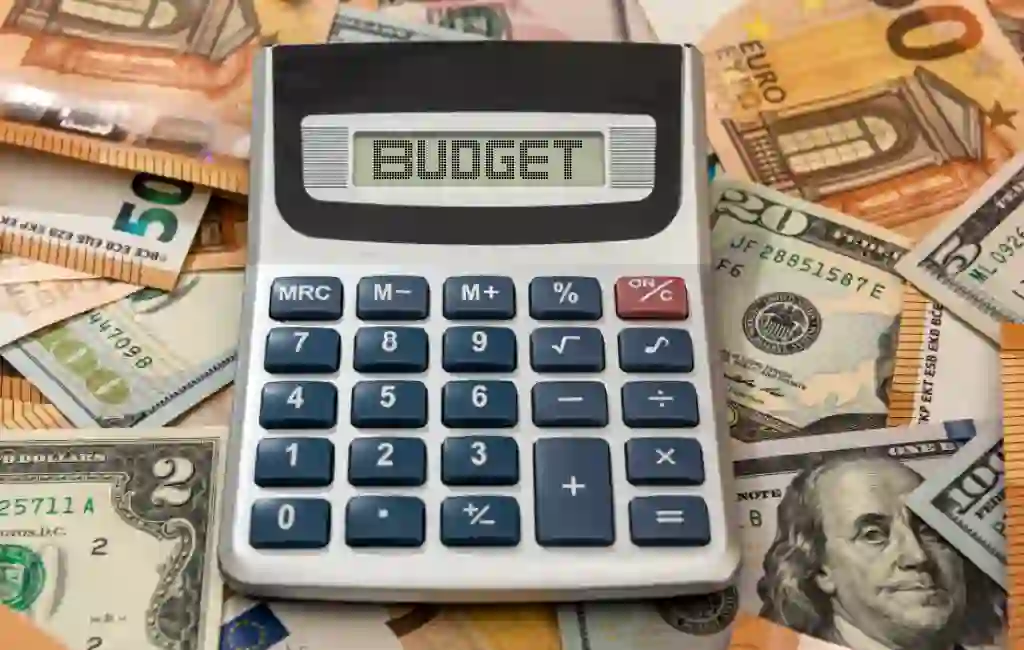Financial success doesn’t happen by accident. Instead, it’s often the result of deliberate planning, smart decisions, and, more importantly, a solid budget. This is where the 3 Step Budgeting Method comes into play, acting as a GPS for your money, guiding you toward your financial goals while avoiding unnecessary detours.
The secrets of successful budgeting aren’t locked away in a vault; they’re available for anyone willing to put in the work and stay committed. Whether you’re a college student looking to manage your allowance better, a young professional trying to maximize your income, or someone preparing for retirement, budgeting is an essential skill to master.
In this article, we will break down the 3 Step Budgeting Method, guiding you in assessing your income and expenses, setting realistic financial goals, and implementing an effective budget. This method will provide a clear financial snapshot and a roadmap to achieving your short and long-term goals. Dive in and discover the transformative power of successful budgeting for yourself.

Importance of Budgeting in Personal Finance
In today’s dynamic economic climate, the role of budgeting in personal finance cannot be overstated. Much like a detailed blueprint in architecture or a comprehensive game plan in sports, a budget acts as a vital roadmap for managing personal finances.
Gaining control of your finances is the main goal of the 3 Step Budgeting Method. It’s about ensuring that you know exactly where your hard-earned cash is going rather than wondering where it went. Here are a few key reasons why budgeting is crucial in personal finance:
- Provides clarity: A budget creates a clear picture of your income and expenses, offering insight into your financial habits. This clarity is the first step in making informed financial decisions and ultimately achieving financial freedom.
- Helps in debt management: A well-structured budget can assist in managing and reducing debt. It enables you to allocate funds towards debt repayment, thereby minimizing interest costs and accelerating your journey to a debt-free life.
- Enables goal setting: Financial goals might seem like vague, far-off dreams without a budget. A budget, however, turns those dreams into tangible targets with actionable steps. Be it saving for a vacation, buying a home, or planning for retirement, a budget serves as a roadmap toward these milestones.
- Promotes saving and investing: By prioritizing savings and investments in your budget, you foster a habit of ‘paying yourself first.’ This practice builds an emergency fund for unforeseen circumstances and grows wealth over time through the power of compound interest.
- Encourages financial discipline: Lastly, budgeting cultivates discipline and responsibility. It restricts reckless spending and impulsivity, fostering financial behaviors that can benefit you in the long run.
Steps for Creating Your Budget

Step 1: Assess Your Income and Expenses
The first step in the 3 Step Budgeting Method is assessing your income and expenses. This is a crucial phase as it lays the groundwork for the subsequent steps in your budgeting process.
Calculate Your Income
Begin by calculating your total income. This is the sum of all the money you bring in regularly. It includes your salary from work, dividends from investments, side hustle income, and any other monetary gains you receive regularly. Remember, an accurate calculation is key here. If you’re paid irregularly or work freelance, estimate an average monthly income or use the lowest monthly amount you expect to receive.
Track Your Expenses
The next task is to track your expenses. For this, document every penny you spend over a month. This includes bills, food, transportation, subscriptions, leisure activities, etc. You can utilize budgeting apps, bank statements, receipts, or even a simple spreadsheet to do this. The idea is to get a comprehensive understanding of your spending habits.
Non Discretionary Expenses
Non-discretionary expenses, also known as fixed or essential expenses, are those that you must pay regularly. This includes rent or mortgage payments, utility bills, insurance premiums, and debt repayments. These are the expenditures that you cannot escape and should be the first line items in your budget.
Discretionary Expenses
Discretionary expenses are the costs for non-essential items or services. They may enhance your lifestyle but aren’t necessary for living. Examples include dining out, vacations, hobbies, entertainment, and luxury items. These expenses typically have more flexibility and are the areas where you can cut back if needed.
Identify Areas for Improvement
Once you’ve tracked and categorized your expenses, identify areas where you can improve. This may involve cutting back on some discretionary expenses, finding ways to reduce non-discretionary expenses, or identifying ways to increase your income. The goal here is to optimize your financial habits to propel you toward your financial goals.
Step 2: Set Financial Goals
With a clear understanding of your income and expenses from Step 1, it’s time to move to the second stage of the 3 Step Budgeting Method: setting financial goals. Your goals give your budget a purpose, serving as the destination points on your financial roadmap.
Short-term Goals
Short-term goals are those you aim to achieve within the next one to two years. They act as stepping stones that lead to the accomplishment of your long-term goals. Examples of short-term goals can include saving for a vacation, purchasing a new laptop, starting an emergency fund, or paying off a specific credit card debt.
Long-term Goals
Long-term goals, on the other hand, are those you plan to achieve in five years or more. These goals often require more significant financial commitment and are usually focused on your big life aspirations. They can include things like buying a home, saving for your children’s education, or building a retirement nest egg.
Prioritize Goals
After listing out your short-term and long-term goals, the next step is to prioritize them. This doesn’t necessarily mean choosing one goal over another; instead, it’s about assigning each goal a level of urgency and importance. When setting priorities, take into consideration factors like time sensitivity, impact on your financial or mental health, and personal values for better outcomes.
A well-planned goal also follows the SMART criteria – it should be Specific, Measurable, Achievable, Relevant, and Time-bound. This gives your goal structure and makes it easier to track progress and make necessary adjustments.

Step 3: Create and Implement Your Budget
Now that you’ve assessed your financial situation and set your goals, it’s time to bring it all together by creating and implementing your budget. This final step of the 3 Step Budgeting Method translates your planning into action.
Allocate Your Income
Start by allocating your income based on the needs you’ve identified. Your income should cover your non-discretionary expenses first, including savings toward your financial goals. Then, allocate the remaining funds to discretionary expenses.
A useful guide during this process can be the 50/30/20 rule of budgeting. It suggests allocating 50% of your income to necessities (non-discretionary expenses), 30% to wants (discretionary expenses), and the remaining 20% to savings and debt repayment. However, adjust these ratios to fit your financial situation and goals.
Monitor and Adjust
Creating your budget is just the beginning. To ensure its effectiveness, monitoring your budget regularly and adjusting it as your circumstances change is crucial. This involves periodically reviewing your income and expenses and ensuring you are on track with your financial goals.
If you notice consistent overspending in a particular category, it might be time to reassess your habits or reallocate your income. Remember, a budget isn’t set in stone. It should be flexible and adaptable to changes in your lifestyle, income, or financial goals.
Seek Expert Advice
While personal finance is indeed ‘personal,’ there’s no harm in seeking expert advice. Financial advisors, credit counselors, or even reliable online resources can provide valuable insights and tips to optimize your budget.

Items to Include in Your Budget
- Income: This includes your salary, business income, dividends, rental income, and any other regular inflow of money.
- Housing Expenses: Rent or mortgage payments, property taxes, insurance, and maintenance costs.
- Utilities: Electricity, water, gas, internet, sewer, recycling/trash service, and phone bills.
- Food: Groceries, dining out, coffee runs, and snacks.
- Transportation: Fuel, public transportation costs, car payments, insurance, and maintenance.
- Healthcare: Insurance premiums, out-of-pocket costs, prescriptions, and any medical/dental/vision related expenses.
- Personal and Leisure: Gym memberships, hobbies, entertainment, vacations, and personal care.
- Debt Repayments: Credit card payments, student loans, personal loans, car loans, etc.
- Savings: Emergency fund contributions, retirement savings, and other investment contributions.
- Miscellaneous: Unexpected expenses like repairs, gifts, donations, and any expenditure that doesn’t fall into other categories.

Effective Budgeting Tips
Creating a budget is only the first step. The true challenge lies in sticking to it and making it work for you. To help you navigate this journey, here are some effective budgeting tips to keep in mind:
- Start Simple: Don’t overwhelm yourself with complex budgeting techniques at the beginning. Start with a basic budget and gradually tailor it to your needs.
- Use Tools and Apps: Utilize budgeting tools and apps available to automate the process. They can help track expenses, monitor your budget, and even provide visual insights into your spending habits.
- Set Realistic Goals: Your budgeting goals should be achievable and in line with your financial capabilities. Unrealistic goals can lead to disappointment and demotivation.
- Include a Miscellaneous Category: Unexpected expenses always pop up. Having a miscellaneous category in your budget can help manage these unforeseen costs.
- Regularly Review and Adjust Your Budget: Make it a habit to review your budget regularly. As your financial situation changes, so should your budget.
- Practice Zero-Based Budgeting: Assign every dollar a job. This means your income minus expenses should equal zero. This technique ensures you know exactly where your money is going.
- Prioritize Saving and Investing: ‘Pay yourself first’ by allocating money to savings and investments before anything else. This promotes financial security and wealth growth.
- Be Patient with Yourself: It may take a few months to get used to your budget. Be patient and make necessary adjustments along the way.
Navigating Towards Success: The Power of the 3 Step Budgeting Method
Effective financial management is vital for everyone, and budgeting sits at its core. The 3 Step Budgeting Method offers a simple yet powerful approach to managing your money. By assessing your income and expenses, setting realistic financial goals, and creating and implementing a budget, you can gain control over your finances and navigate toward financial stability and prosperity.
Remember, a budget is more than just a financial tool; it’s a reflection of your values and priorities. It empowers you to make conscious decisions, paving the way for a secure financial future. As you embark on your budgeting journey, let the 3 Step Budgeting Method guide you toward fiscal success. You have the power to change your financial story, one budget at a time.
FAQ
What are the budgeting methods?
There are several budgeting methods, including:
- Zero-based budgeting: Every dollar of income is assigned a specific purpose, such as bills, savings, or discretionary spending so that income minus outgo equals zero.
- 50/30/20 rule: This method suggests allocating 50% of your income for necessities, 30% for discretionary spending, and 20% for savings and debt repayments.
- Envelope system: This involves allocating cash for different spending categories in separate envelopes. Once the cash in an envelope runs out, you stop spending in that category until the next budgeting period.
Values-based budgeting: In this method, you first allocate money to things that align with your core values, then the rest of your budget falls into place around those priorities.
What is the golden rule of budgeting?
The golden rule of budgeting is “Pay Yourself First.” This means before you pay your bills or buy groceries, a portion of your income is set aside for savings (towards an emergency fund, retirement, or specific financial goals).
What is a budget weakness?
A budget weakness refers to flaws or areas of improvement in your budgeting process. This could include consistently overspending, not accounting for all expenses, setting unrealistic budgeting goals, or not regularly reviewing and adjusting the budget.
What is a minimalist budget?
A minimalist budget is a simplified budgeting method that focuses on reducing and simplifying expenses. The goal is to spend money only on necessities and things that truly add value to your life, thereby saving more and reducing financial stress.
What is the 5x spending rule?
The 5x spending rule suggests that you should have at least five times that amount in savings for any discretionary purchase. This rule helps promote mindful spending and prevents impulsive purchases that can disrupt your budget.








